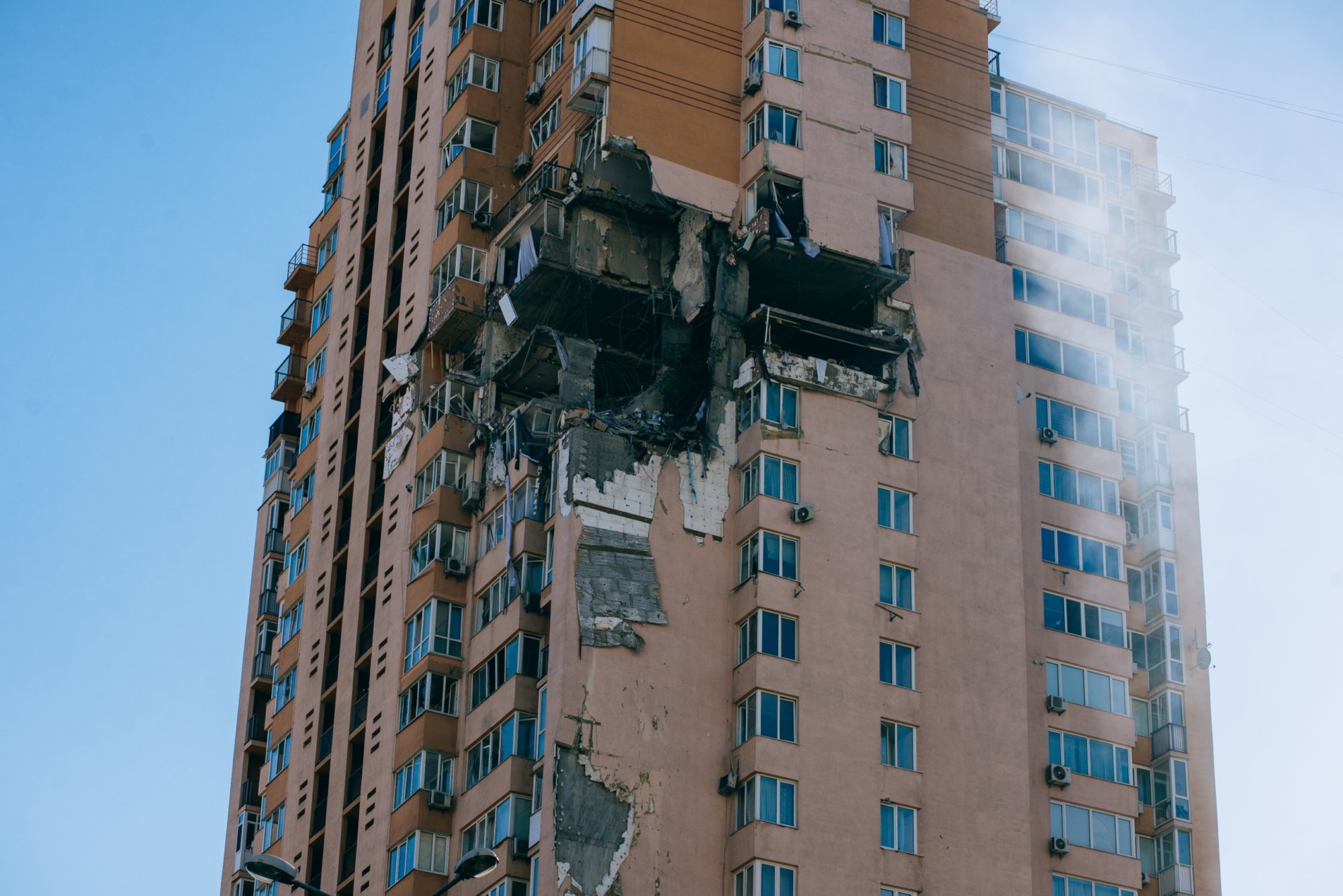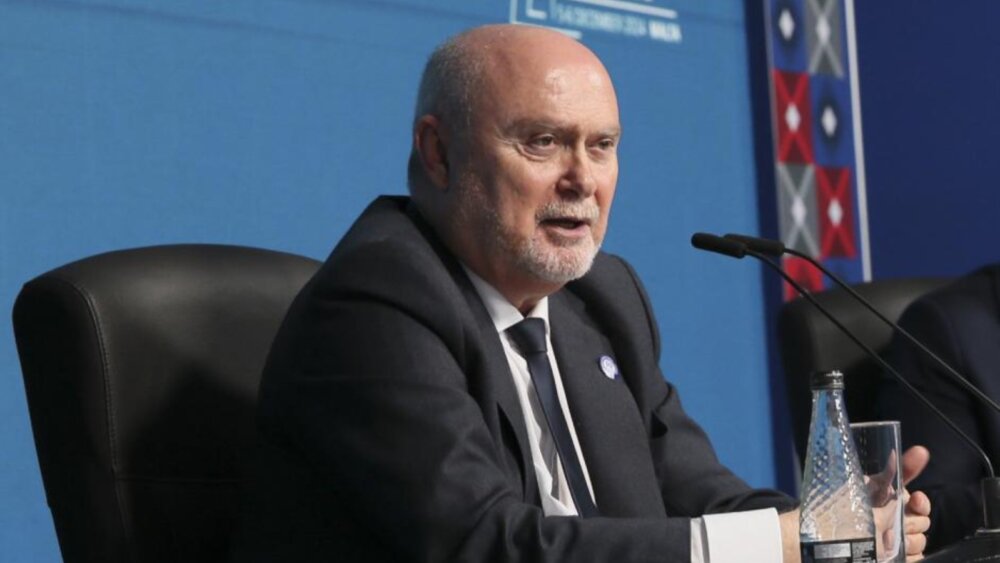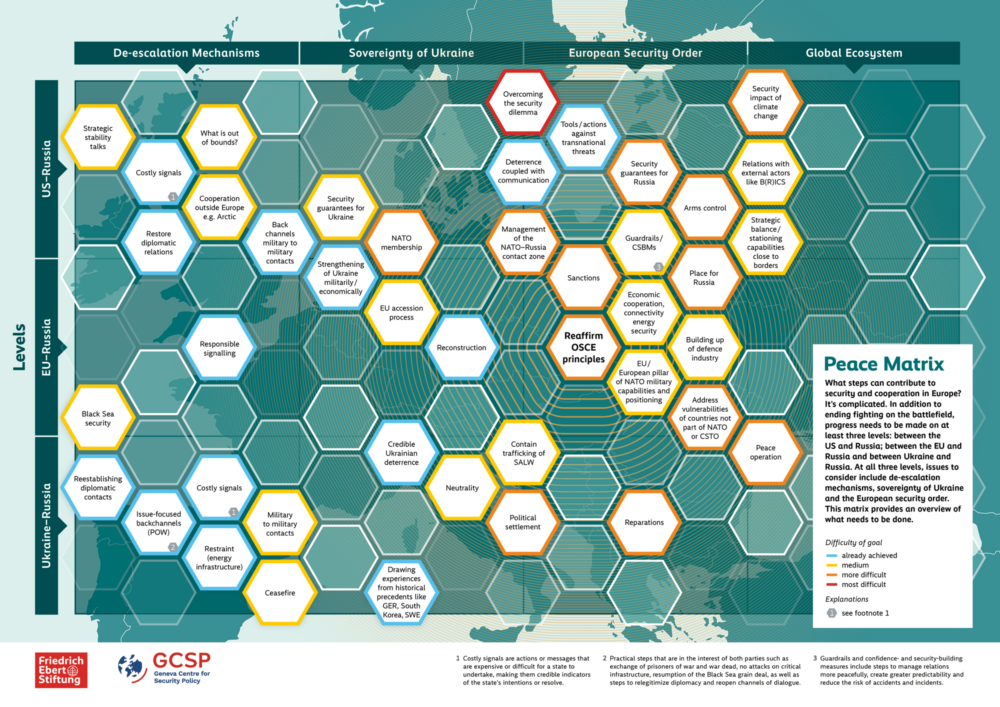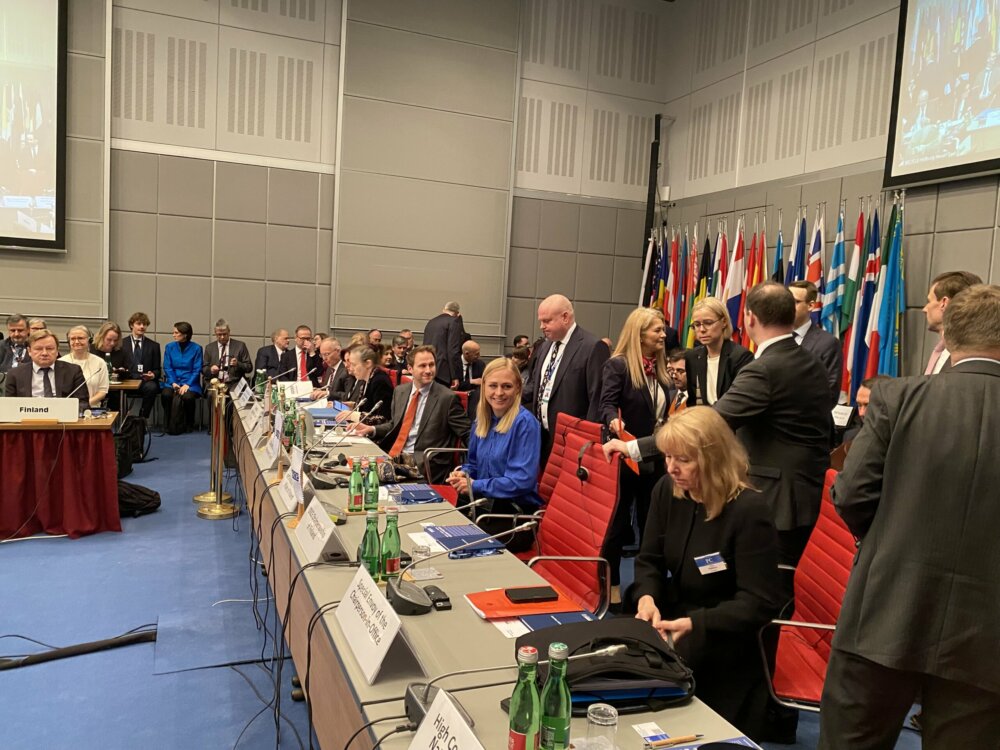Julia Rekamie/Unsplash

How the OSCE helps collect evidence of potential war crimes in Ukraine
Since the start of Russia’s war against Ukraine in February 2022, the OSCE has been virtually blocked on all fronts.
The strained relations between Russia and the West are disrupting the OSCE’s decision-making process, which is based on the consensus of all 57 states.
In this adversarial environment, adopting decisions has become almost impossible. The organization has no approved budget and no chair for 2024, and had to close down all of its field missions in Ukraine due to Russia’s refusal to extend their mandates.
In an attempt to overcome this paralysis, OSCE participating states have made increasing use of an instrument that does not require consensus: the so-called OSCE Moscow Mechanism, which has been invoked a record five times in the 16 months since the start of the war.
Human rights a legitimate concern to all
The OSCE Moscow Mechanism was adopted at the Moscow Meeting of the Conference on the Human Dimension, which was facilitated by the OSCE’s predecessor, the Conference on Security and Cooperation in Europe (CSCE).
The meeting was held in September and October 1991 during a time of dramatic geopolitical shifts when the Soviet Union was in the midst of its dissolution.
The CSCE at the time consisted of 38 participating states. They adopted the Moscow Mechanism as part of a comprehensive document, consolidating CSCE human rights commitments and declaring that human rights and freedoms are “matters of direct and legitimate concern to all participating States and do not belong exclusively to the internal affairs of the State concerned.”
Intrusive measure
The Moscow Mechanism is an instrument to improve and monitor the implementation of OSCE human rights commitments. It builds on the so-called OSCE Vienna Mechanism, which was adopted two years earlier, in 1989.
OSCE participating states can activate the Moscow Mechanism via a series of progressive steps.
As a first step, a participating state may take its own initiative and invite an expert mission onto its own territory to “facilitate resolution of a particular question or problem relating to the human dimension.” The recommendations of the expert mission will then be discussed among the inviting state and all other participating states in an effort to resolve the problem.
As a second step, one or more participating states can request that a state invite an expert mission onto its territory to help resolve a specific question related to human rights. If the requested state does not cooperate and refuses to invite a mission, or if the invited mission is unsuccessful, more intrusive steps can follow.
As a third step, an investigation into a specific human rights question can then still be launched, even without the agreement of the state concerned.
In the case that the voluntary mission of experts fails, a state may then be forced to receive a mission of experts if six states agree to launch the Moscow Mechanism.
In the case that ten states agree there is a “particularly serious threat” to human rights in a specific country, the mandatory expert mission can be launched immediately.
The rapporteurs for any of the missions will be chosen from a roster of experts.
But in practice the states under investigation have frequently refused to issue visas for rapporteurs if they did not agree with the launch of the Moscow Mechanism against them, which then forces the experts to work from outside the country concerned. Also, there has been very limited follow-up on the recommendations of the experts thus far.
This was the case for the two recent Moscow Mechanism expert reports that looked into the state of human rights in Russia and Belarus, with a particular focus on how the situation has developed since the start of the war against Ukraine.
Instrument for accountability and evidence collection
What all of the Moscow Mechanism investigative missions have in common is the goal of helping resolve potential human rights violations in OSCE states and supporting the states under investigation with follow-up recommendations and mediation.
The main aim of the Moscow Mechanism expert missions is therefore not only to “improve further the implementation of CSCE commitments in the human dimension” but also to “facilitate resolution of a particular question or problem relating to the human dimension.”
This aim is also reflected in virtually all mandates of the expert missions launched under the Moscow Mechanism since its inception in 1991. The expert reports usually conclude with recommendations for how to improve the situation.
But most recently, since the full-scale Russian invasion of Ukraine, the Moscow Mechanism has increasingly become an instrument for collecting evidence and shining a light on human rights abuses and potential war crimes, rather than a tool for mediating and resolving human rights violations via dialogue and cooperation.
The focus has shifted more toward documenting abuses so that there can be accountability via other institutions, such as international and national courts and tribunals.
Because it doesn’t require consensus, the Moscow Mechanism has also become a way for participating states to work around Russian obstructionism within the OSCE, and to respond to the situation amid deadlock on all other fronts.
Establishing facts of possible cases of war crimes
The OSCE released its first Moscow Mechanism expert report on Ukraine just a month and a half after the full-scale Russian invasion began. The mechanism was invoked by Ukraine, supported by 45 other OSCE participating states.
The report, published on 13 April 2022, was the first independent expert analysis from an international organization to identify potential war crimes committed by Russian forces in Ukraine. It catalogued evidence of killings, torture and the devastating effects of missile attacks launched by Russia against Ukraine.
The report said violations had also occurred on the Ukrainian side but added that those committed by Russia were “by far larger in nature and scale.”
One of the main aims of the report was to share the findings with other international bodies as well as national courts that could make more detailed investigations into legal and political accountability.
The experts were mandated to “establish the facts and circumstances of possible cases of war crimes and crimes against humanity … and to collect, consolidate, and analyse this information with a view to presenting it to relevant accountability mechanisms.”
The second Moscow Mechanism report on the humanitarian impact of the Russian war against Ukraine was issued only three months later, on 14 July 2022. This time, the Moscow Mechanism was invoked by 45 states after consultations with Ukraine.
The expert report built on and confirmed the findings of the first report and concluded that there were “reasonable grounds to believe that war crimes and crimes against humanity have been committed in the current conflict in Ukraine, mostly, albeit not exclusively, by members of the armed forces of the Russian Federation.”
Again, the findings of the report can serve as a basis for further investigation and prosecution by national and international courts, such as the UN International Court of Justice, the International Criminal Court and the European Court of Human Rights—all bodies that can establish individual or state responsibilities.
Another expert report released under the Moscow Mechanism was published on 4 May of this year. It was again invoked by 45 participating states after consultations with Ukraine.
The report examined allegations of forcible transfer and/or deportation of children to Russia. It established that “a large number of Ukrainian children have been, since 24 February 2022 and even prior to this date, displaced from the territory of Ukraine to the temporarily occupied territories and to the territory of the Russian Federation.” The experts of the report added that the exact number of displaced children remained “uncertain.”
The report concluded that the displacements of Ukrainian children constituted a violation of international humanitarian law and “in certain cases amount to grave breaches of the Geneva Convention IV (GCIV) and war crimes.”
Similar to the two Ukraine-related reports in 2022, the mandate of this expert mission was to collect information and offer recommendations that could be made available to “relevant accountability mechanisms, as well as national, regional, or international courts or tribunals.”
In short, the invocation of the Moscow Mechanism demonstrates that the OSCE is still able to operate despite the current paralysis within the organization, and that this mechanism can be used as a way of holding Russia accountable for its actions.



Comments
* Your email address will not be published